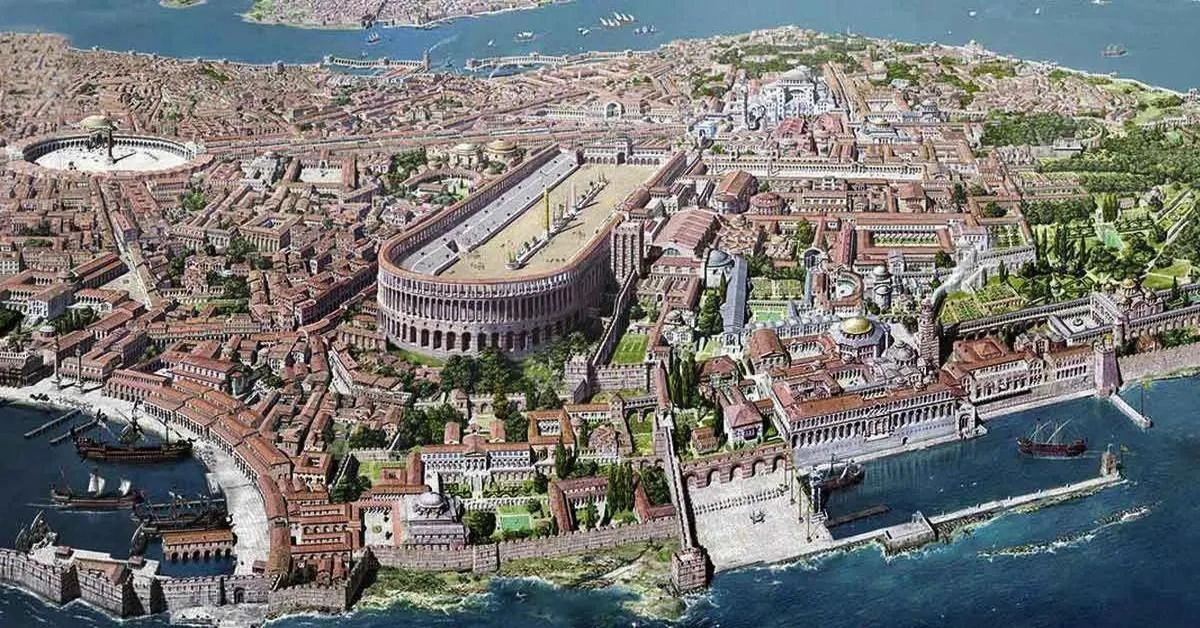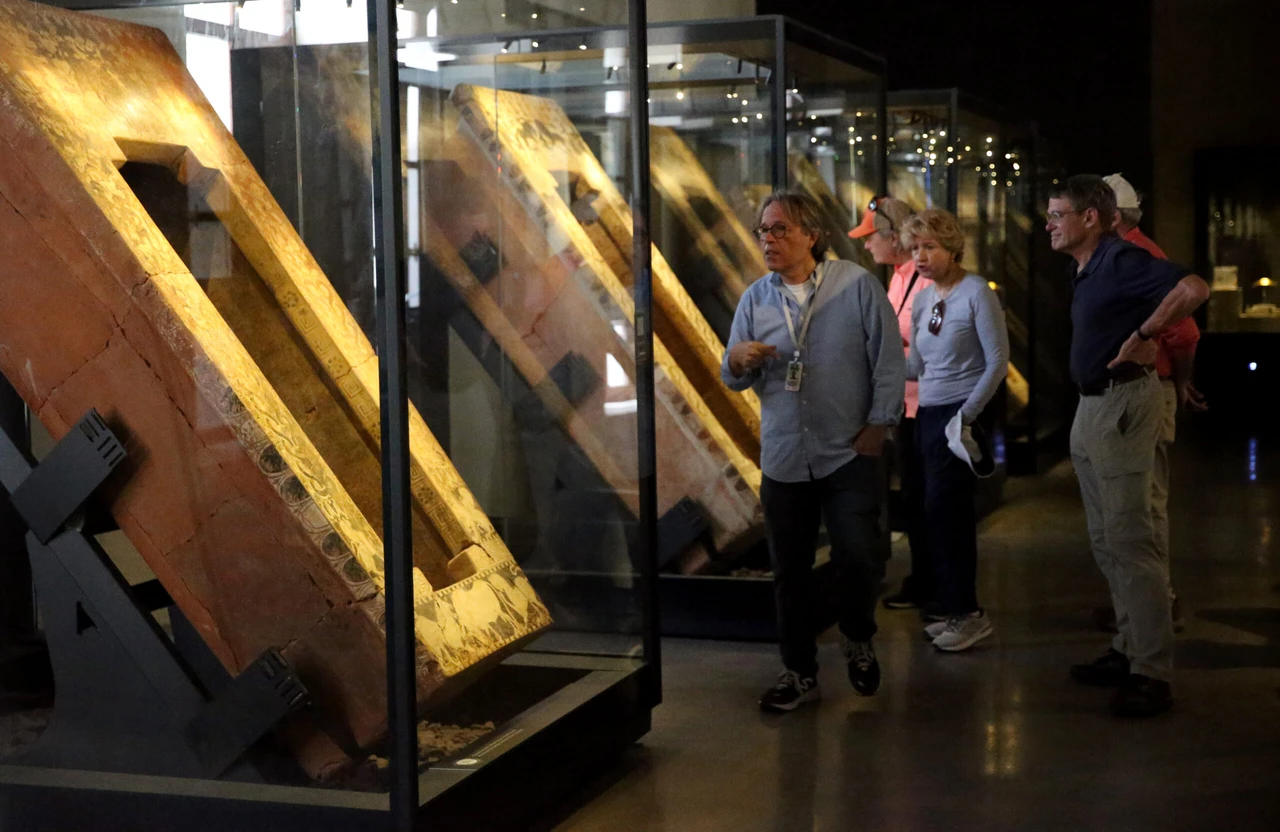‘Capital of 3 empires’: Istanbul turns 1694 years old

The city, which dates back 8,500 years, has been known by dozens of names for thousands of years, such as Byzantion, Constantinople, Constantinople, Asitane, Darulhilafe and Dersaadet
Istanbul is celebrating its 1694th birthday. It is a magnificent city for which Napoleon – one of the most celebrated commanders and state leaders in world history – said: “If the world were a single state, Istanbul would be the capital.”
The city, which dates back 8,500 years, has been known by dozens of names for thousands of years, such as Byzantion, Constantinople, Constantinople, Asitane, Darulhilafe and Dersaadet.
It is thought that Neolithic and Chalcolithic people first lived in Istanbul around Kucukcekmece Lake. Lower Paleolithic tools were found near Istanbul’s Dudullu and Middle Paleolithic and Upper Paleolithic tools were later discovered near Agacli.
In 2008, during the excavations for the Marmaray tube crossing, remains from the Neolithic Age were found, while excavations in Fikirtepe on the Anatolian side revealed remains from the Copper Age.
Moreover, remains from the Iron Age were also found in Kadikoy.
Istanbul founded as Constantinople on May 11, 330
King Byzas set out from Megara in Greece in the 7th century B.C. and founded Byzantion as a Greek colony settlement in Sarayburnu. When the Roman Empire dominated the city, Byzantion was rebuilt between 324 A.D. and 330 A.D. with a comprehensive and intensive reconstruction activity modeled on the Roman city.
The city was consecrated with ceremonies on May 11, 330 A.D., and declared to the world as the new capital of the Roman Empire.
Constantinople, named after its founder, was chosen by Constantine I as the new capital of the empire and became the center of the Late Antique world. The city’s founding ceremonies began in what is now Sultanahmet Square and continued at the Forum of Constantine, now known as Cemberlitas Square.
This was the turning point in Istanbul’s history, and today, the city has become one of the world’s famous megapolis.
The city was the capital of the Roman Empire, later called Byzantium by modern historians, for 1123 years and the capital of the Ottoman Empire for 470 years from 1453 to 1923.
Roman city of Constantinople period
Founded in the mid-4th century A.D., Constantinople resembled a Roman city. At its foundation, the borders of the new capital were first defined. The city walls of Byzantion, which extended approximately from today’s Cagaloglu through Sirkeci, Sarayburnu and Sultanahmet, were removed.
The city was expanded westward by 2.5 kilometers (1.5 miles).
The center of Constantinople was the area around today’s Sultanahmet Square. Between 324 A.D. and 1453, Constantinople became the administrative center of the east of Rome.
During this period, the city expanded and developed in all respects, with a new architectural structure.
A hippodrome (Sultanahmet Square) for about a hundred thousand people, harbors, and water facilities were built.
Constantine, who founded Hagia Sophia, the largest cathedral in the world at the time, in 360 A.D., thus changed the religion of the Roman Empire to Christianity.
This period saw the first break with the West, which believed in the pagan Roman religion.
The Byzantine Empire began with the death of Theodosius I. When Western Rome collapsed in 476 A.D., most of the Romans in the Western Roman Empire migrated to Istanbul, which became the capital of the Byzantine Empire. A plague epidemic in 543 A.D. killed half the population.
Emperor Justinian I rebuilt the city.
Istanbul was repeatedly attacked, sacked and reduced to rubble during the 4th Crusade in 1204. The Latin period ended in 1261. Byzantium, which gradually lost its power after this period, began to be besieged by the Ottoman Empire after 1391.
Ottoman Empire period
With the Byzantine Empire’s fall and the Ottoman Empire’s rise, Istanbul’s fate changed once again.
On May 29, 1453, Mehmet the Conqueror’s conquering siege marked the end of the Middle Ages and the rise of the Ottoman Empire, opening the doors to a new era.
Istanbul developed rapidly during the Ottoman period. Hundreds of palaces, bazaars, mosques, schools and baths were opened. Churches were converted into mosques. Within 50 years, it became one of the largest cities in the world, where Jews, Christians and Muslims lived in harmony.
The city became modern with many innovations, such as a bridge over the Golden Horn, a tunnel to Karaköy, railways, maritime transportation within the city, and the establishment of municipal organizations and hospitals. In 1918, the city was occupied by the Entente.
Republic period
Istanbul’s 2,500-year reign as capital ended with the Republic on October 29, 1923. Since then, however, it has become the world’s most populous, economically and culturally vibrant metropolis.
Istanbul has now become a city integrated into the world in many areas. It has become one of the first metropolises that come to mind regarding the qualified labor force, culture and entertainment tourism.
Today, Istanbul has 39 districts. Of these districts, 25 are located on the European side and 14 on the Anatolian side.
Source: Newsroom



